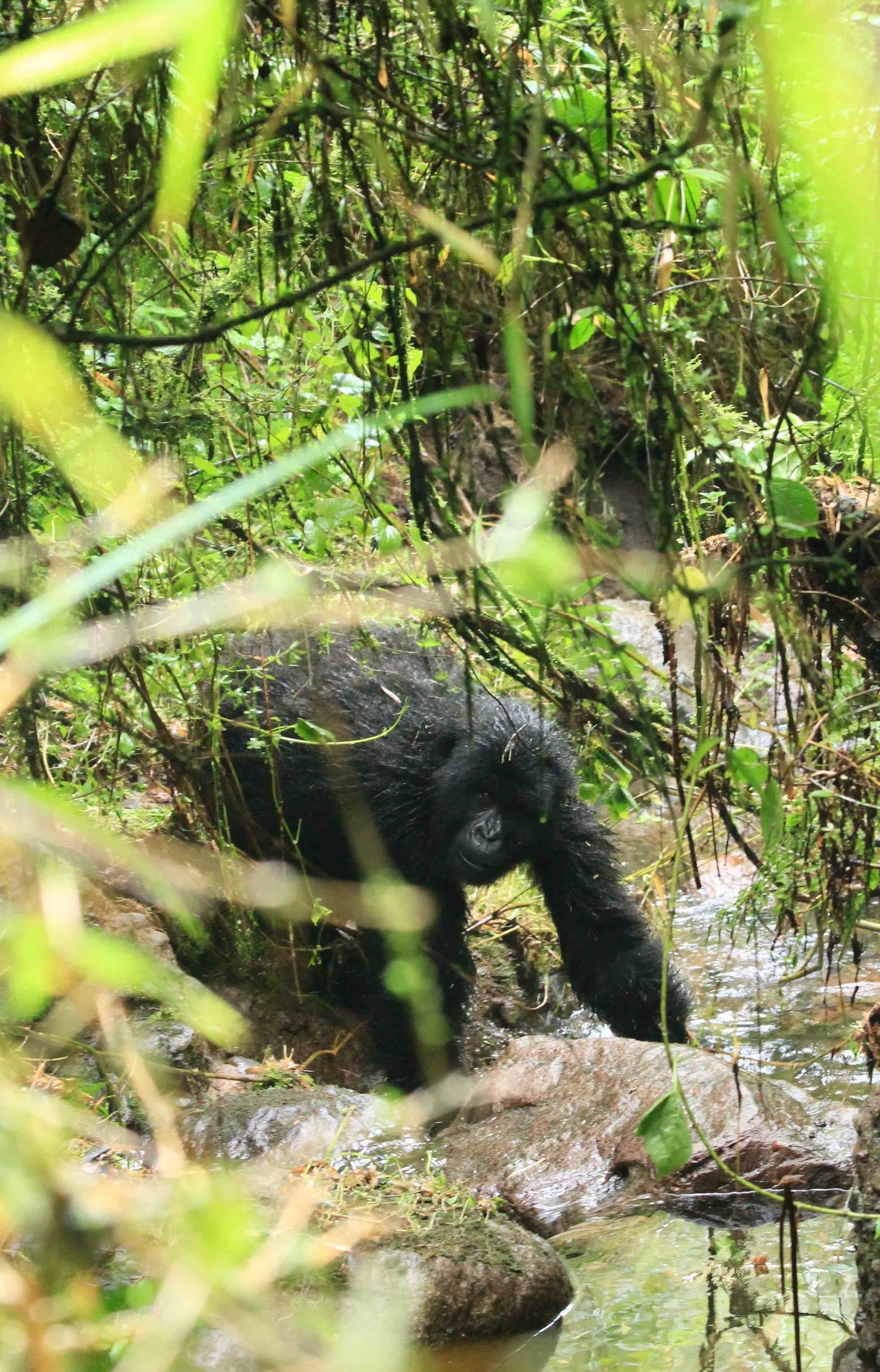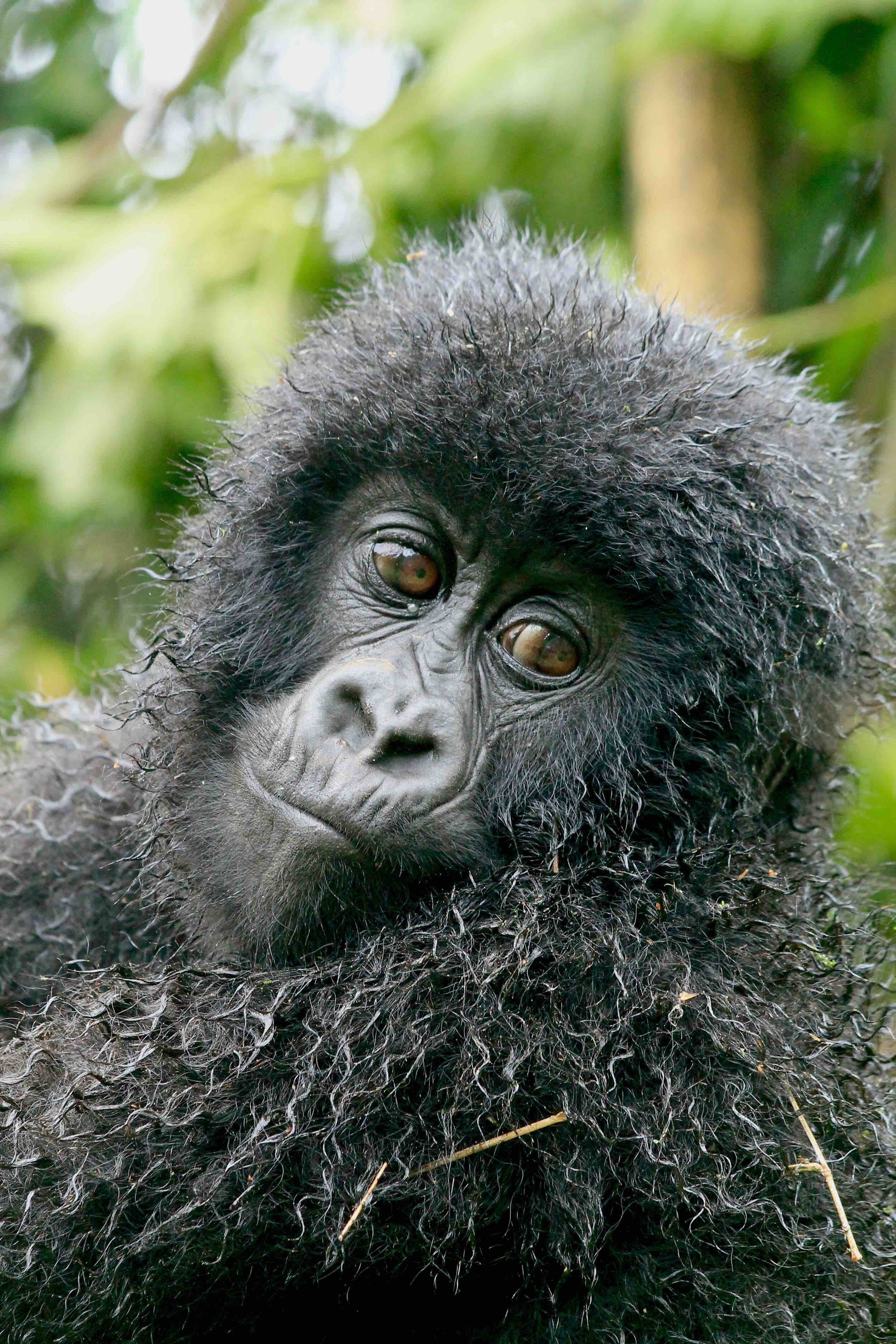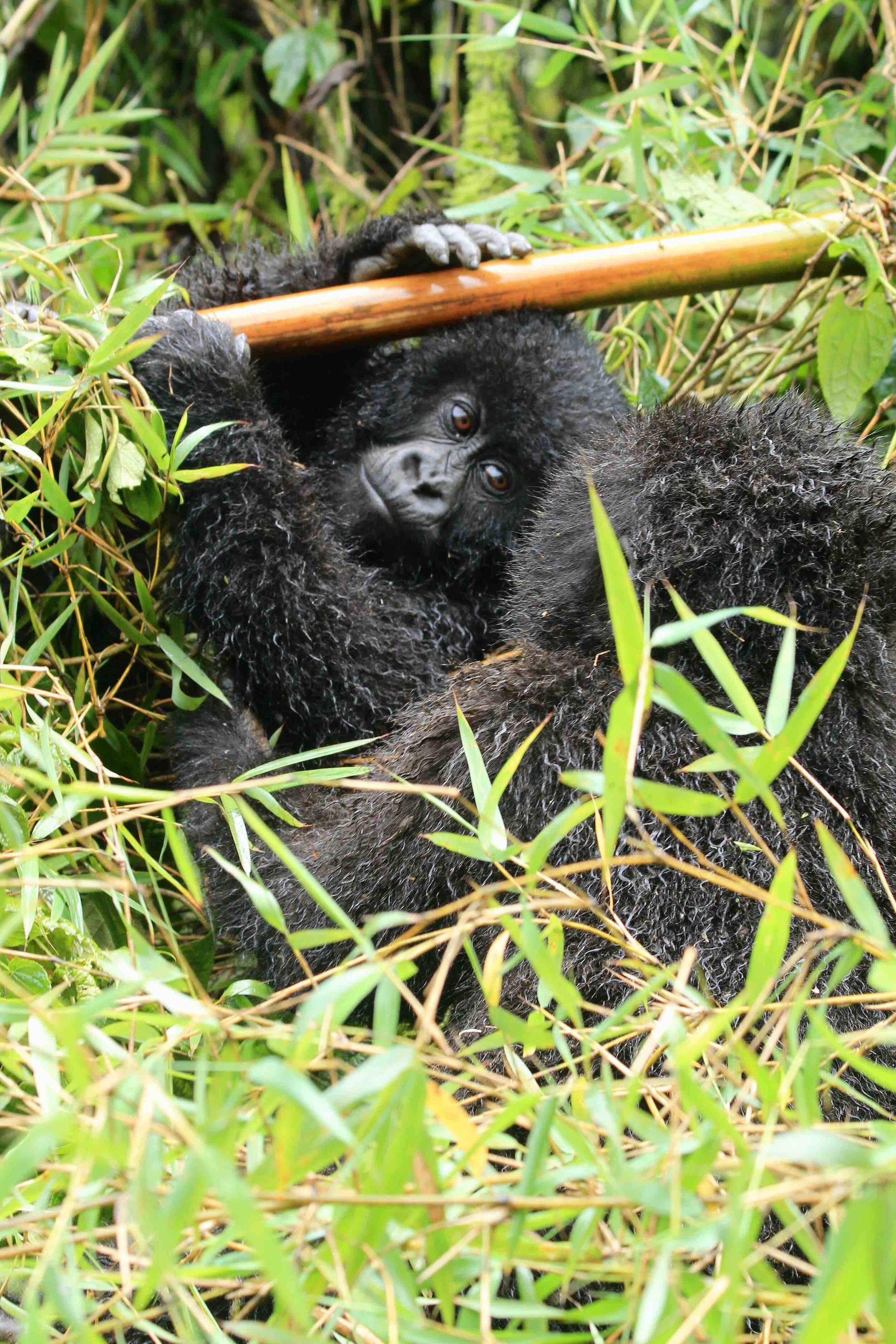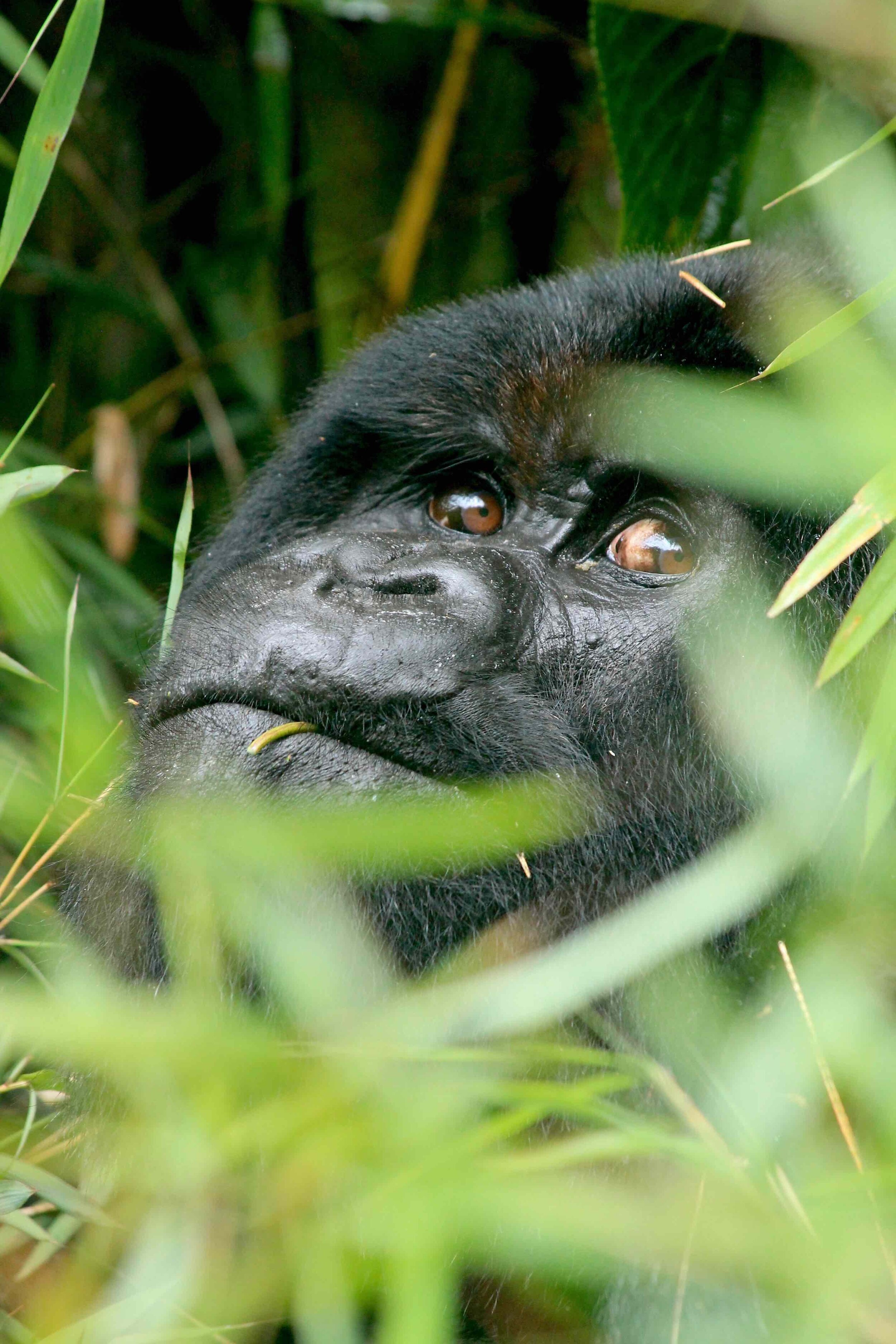Gorillas in the mix
A close encounter with a family of mountain gorillas in Rwanda’s Volcanoes National Park.
‘Mah-mmmmm’. Our guide, Bernice, offered a throaty call into the forest. A clump of bushes suddenly shook in the distance, and an enormous silverback gorilla emerged into the clearing in front of us. He grunted deeply in response, and sat down to chew on a bamboo shoot. A few moments later, a matted black ball of fur tumbled out into the open. He was followed by another bundle of fur, and they wrestled and rolled on the path beside us. Within minutes an entire family of mountain gorillas surrounded us, unconcerned by our presence.
I was in Rwanda’s Volcanoes National Park, on the southern edge of the Virunga Massif — a vast range of volcanic peaks along the shared borders of Rwanda, Uganda and the Democratic Republic of Congo. Virunga is home to about 500 mountain gorillas, just over half of the estimated global population. The gorillas that surrounded us were members of the Hirwa family, one of 10 groups on the Rwandan side of the ecosystem that have been habituated to near-daily contact with people.
The park is about 110km from Rwanda’s capital, Kigali, and it took us two hours to reach along smooth, winding roads. We had to leave our base at the Radisson Blu Hotel at 4.30am, but I can think of few experiences I would rather wake up early for.
Once we arrived at the park headquarters, we joined our guides, Bernice and Francis, for a short briefing. They informed us that trackers had located each of the 10 gorilla families before we arrived, and that we would be allocated a family based on our hike preferences. We were assigned the Hirwa family because we opted for a ‘medium’ hike — about a four-hour round trip.
As the park is home to a third of the global population of mountain gorillas, access is understandably restricted. Only 80 visitors are permitted to take a guided gorilla trek each day, and groups of up to eight are allowed to spend no longer than an hour with one of the gorilla families. This strict time limit has been imposed to reduce behavioural disturbance, and to minimise the possible transmission of human illnesses.
Briefing over, we set off with our guides and porters to the last known location of our gorillas. For the first 45 minutes or so, we navigated muddy tracks in between settlements on the edge of the park, and trampled across sloped fields of potatoes. We skirted the park boundary — a basic brick wall — for as long as possible before penetrating the forest, as we covered ground more quickly in the adjoining fields. Even out here, though, there were signs of gorilla life: rows of eucalyptus trees stripped of their bark.
We eventually clambered over the wall into the forest, along the Sabyinyo trekking trail. Oblivious to us at the time because of the low cloud cover and drizzle, we were actually at the base of the 3,645 m high Mount Sabyinyo — one of eight volcanoes of the Virunga Massif. ‘Sabyinyo’ is derived from the Kinyarwanda word for ‘tooth’, and suitably describes the mountain’s serrated summit.
We were looking out for the signs that the trackers often use to find the gorillas: stems stripped of foliage, or knuckle prints in the mud. Instead, we came across signs of other forest dwellers, including fresh elephant footprints.
After a few kilometres, we met up with the trackers, who told us that the gorillas we were searching for were a stone’s throw away behind a screen of bamboo. I knew what was coming, but nothing can quite prepare you for such a close encounter with animals so critically endangered, and so human-like. It’s easy to appreciate the fact that they share 98% of our DNA, as they gaze at you impassively.
After our initial encounter with the dominant male — a silverback called Munyinya — the group dispersed into the forest. The wrestling youngsters, a one and a three year old, shadowed Munyinya the entire time. We chased after them for the majority of our precious hour, scurrying up and down slippery slopes, hopping over streams, nursing nettle stings, hacking through bamboo thickets and escaping giant ant nests. Munyinya eventually perched himself precariously on top of a flimsy bamboo tree, and the toddlers carried on play fighting on the surrounding branches.
While gorilla numbers have grown over the last few years, the protected forests of the Virunga Massif are increasingly under pressure. Sadly, this motivated the Rwandan Development Board to double the price of gorilla trekking for foreign visitors to an eye-watering $1,500. There’s no doubt, though, that these funds are being put to good use, including in anti-poaching efforts, reforesting the park’s buffer zone, and supporting adjacent communities. As long as the visitors keep coming, and the fees are reinvested wisely into the park, Rwanda’s gorillas should continue to thrive.






